26 Fairmount Avenue (4 page)
Read 26 Fairmount Avenue Online
Authors: Tomie dePaola
Then the Prince came on the screen and sang to Snow White. The Evil
Queen, looking fierce and mean, watched. My brother sank down in his seat.
The Evil Queen went to her Magic Mirror and said the words I knew so well: “Mirror, Mirror on the wall, who is the fairest of them all?” The mirror said it was Snow White, and the Evil Queen looked angrier than ever. Buddy sank down even farther.
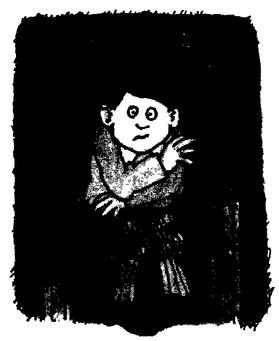
But he really freaked out when the Evil Queen ordered the huntsman to take Snow White into the woods to be killed, and the woods looked just like Hemlock Grove. Tree limbs grabbed at Snow White, and yellow eyes stared down at her.
It was scary, and I loved it. But lots of kids didnât, and suddenly I heard crying and screaming all around me, even from Buddy. “I want to go home!” he yelled. “Come on,” my mother said, standing up. “Let's go.”
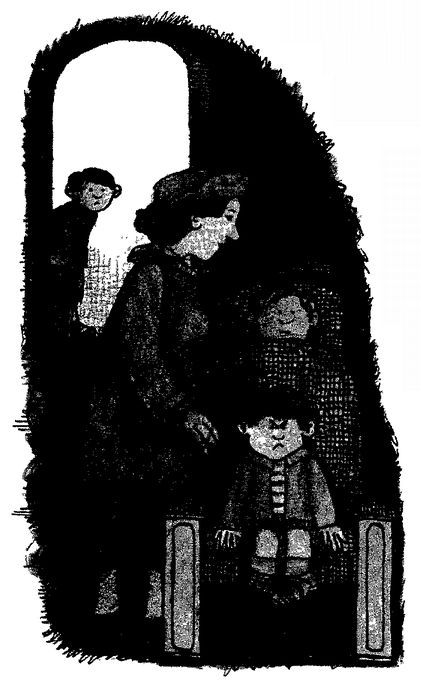
“I'm not going,” I said. I had waited a long time for Mr. Walt Disney's movie. My mom, who is probably the smartest person in the world, understood. “All right, Tomie, sit right here and don't move. I'll be in the lobby with your brother.” That was fine with me.
Lots of mothers left with their kids. I thought that was a good thing to do if the kids were afraid of the trees. They probably would wet their pants when the Evil Queen made the poisoned apple for Snow White and drank the magic potion to turn herself into the Evil Witch (even I was a little scared when that happened).
Then things about the story started to bother me. Why was the Evil Queen making the poisoned apple now? The true story was different. In that story, before the Evil Queen gave Snow White the apple, she went to the dwarfs' cottage and pulled the laces of Snow White's vest so tight that Snow White couldn't breathe and she fainted. The dwarfs came home just in time to loosen the laces and save her.
Next, the Queen went a second time to visit Snow White with a poison comb, which she stuck in Snow White's hair. Snow White fainted once more, but the dwarfs got back in time to take the comb out and save her again.
The
third
time was the poisoned apple.
third
time was the poisoned apple.
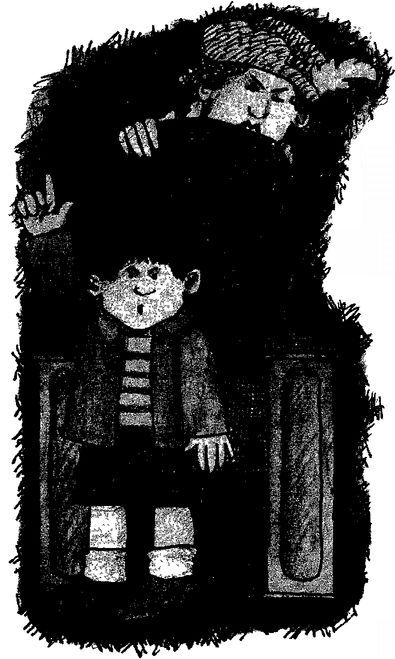
Maybe Mr. Walt Disney hadn't read the true story, because he used only the apple. I stood up and shouted at the movie screen, “Where are the laces? Where is the comb?”
A lady behind me said, “Hush, little boy! Sit down.” I did, and the movie was like the book again until the dwarfs put Snow White into the crystal coffin.
But then I knew that Mr. Walt Disney hadn't read the true story carefully enough because he got it all mixed up with “Sleeping Beauty” and had the Prince kiss Snow White, and she woke up. In the true story the Prince carries the coffin to his palace, and on the way the piece of poisoned apple falls out of Snow White's mouth and she wakes up. But this time I didn't yell at the movie screen, in case the lady behind me got mad at me again.
But when “The End” appeared on the screen, boy, was I mad! I couldn't help it. I stood up and hollered, “The story's not over yet. Where's the wedding? Where're the red-hot iron shoes that they put on the Evil Queen so she dances herself to death?”
That was the true end of the true story. Just then my mom came running in, grabbed me, and dragged me out.
“Mr. Walt Disney didn't read the story right,” I yelled again.
I never did understand it, and when I went to see
Snow White and the Seven Dwarfs
again, with Carol Crane, I warned Carol that Mr. Walt Disney hadn't read the true story. I didn't yell at the movie screen. But I still wished I could have seen the Evil Queen dancing to death in those red-hot iron shoes!
Snow White and the Seven Dwarfs
again, with Carol Crane, I warned Carol that Mr. Walt Disney hadn't read the true story. I didn't yell at the movie screen. But I still wished I could have seen the Evil Queen dancing to death in those red-hot iron shoes!

Chapter Four
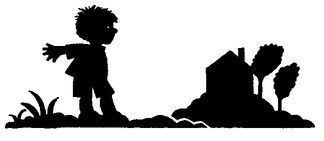
R
ight after the Christmas of 1938, my dad had a big fight with the man he had hired to build the house. My mom and dad wanted the house to be built a certain way, but the builder didn't listen to them. “I'm paying for it,” Dad said. And they fired the builder.
ight after the Christmas of 1938, my dad had a big fight with the man he had hired to build the house. My mom and dad wanted the house to be built a certain way, but the builder didn't listen to them. “I'm paying for it,” Dad said. And they fired the builder.
So 26 Fairmount Avenue just sat there all winter without any work being done. My dad and mom would put Buddy and me in the car and drive by to look at the sad, unfinished house. Maybe we would have to live in apartments forever.
Easter came. Easter was always fun because every year the Easter Bunny brought Buddy and me Easter baskets. I always got a stuffed animal, too. My favorite was a duck.
We got new “outfits” to wear to church on Easter Sunday. My mom must have loved to dress up Buddy and me, because there are pictures and home movies of us, Buddy in long pants, a jacket, and necktie; me in shorts, a striped shirt, and a beret. We certainly were what grown-ups call “fashion plates.”
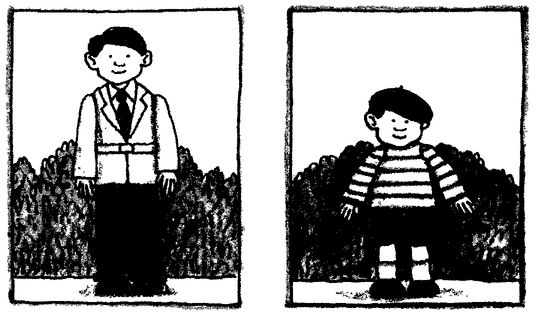
“Guess what?” my dad said one day in the spring. “Johnny Papallo, Tony Nesci, and a few of my other friends are going to help us finish the house.”
Hurray! I might get to live in our house at 26 Fairmount Avenue after all.
But before my dad's friends could start work, the City decided that Fairmount Avenue would be a real street with telephone poles and streetlights.
Machines came and scraped away lots of dirt, which made the street lower. Suddenly our house, which had been on a small hill, was way up in the air. My mom cried. My dad said some bad words.
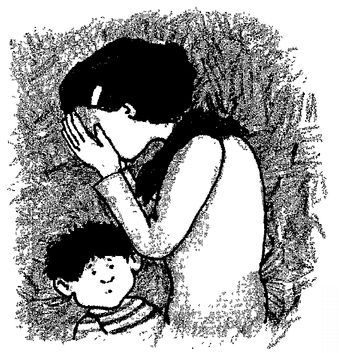
Now a wall would have to be built to keep the front yard from falling into the street. Stairs would have to be made so we could get to the front door. And, last but not least, they would have to put in a steep driveway so we could get to the garage. Until all this was done, no one could work on the house because no one could get up to it.
And the new street was still just dirt. Every time it rained, the street turned to mud.
Well, my father's friends were really smart men. They just got boards and loads of wooden planks and made a long walkway up to the house. Mr. Johnny Papallo, Mr. Tony Nesci, and all the others started to work.
Soon the roof was on the house and the inside walls were up. They were made of plasterboard, which was like heavy cardboard. Later, men called “plasterers” would come and smear wet plaster over the plasterboard, and it would dry into smooth, white walls.
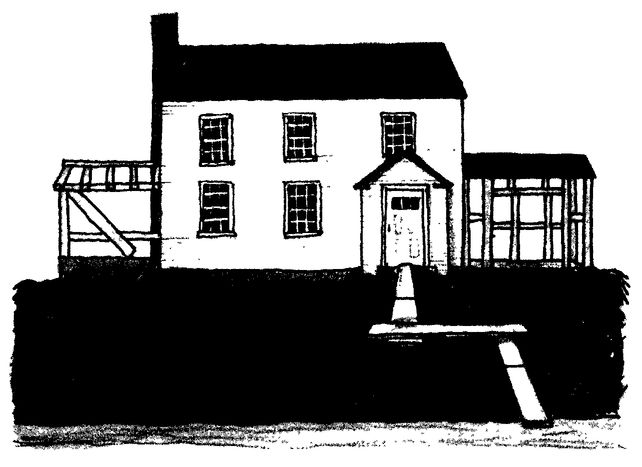
Other books
Diamond Eyes by A.A. Bell
the Thundering Herd (1984) by Grey, Zane
Gold Fame Citrus by Claire Vaye Watkins
Double Coverage by Meghan Quinn
Code Name: Luminous by Natasza Waters
Sand in My Eyes by Christine Lemmon
The History of Love by Nicole Krauss
Cry Wolf by Angela Campbell
Some Day I'll Find You by Richard Madeley
Equilateral by Ken Kalfus